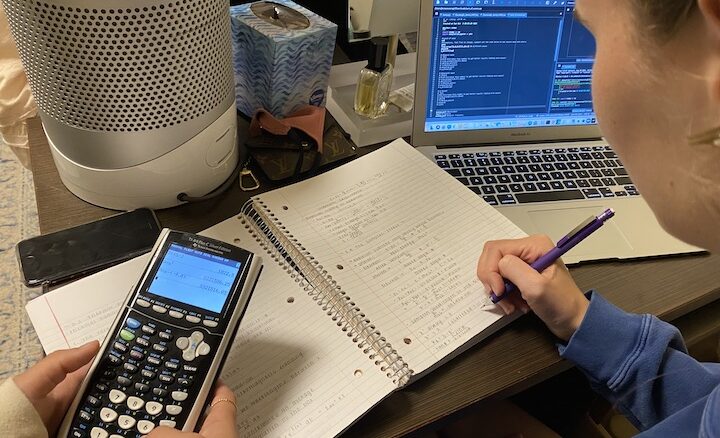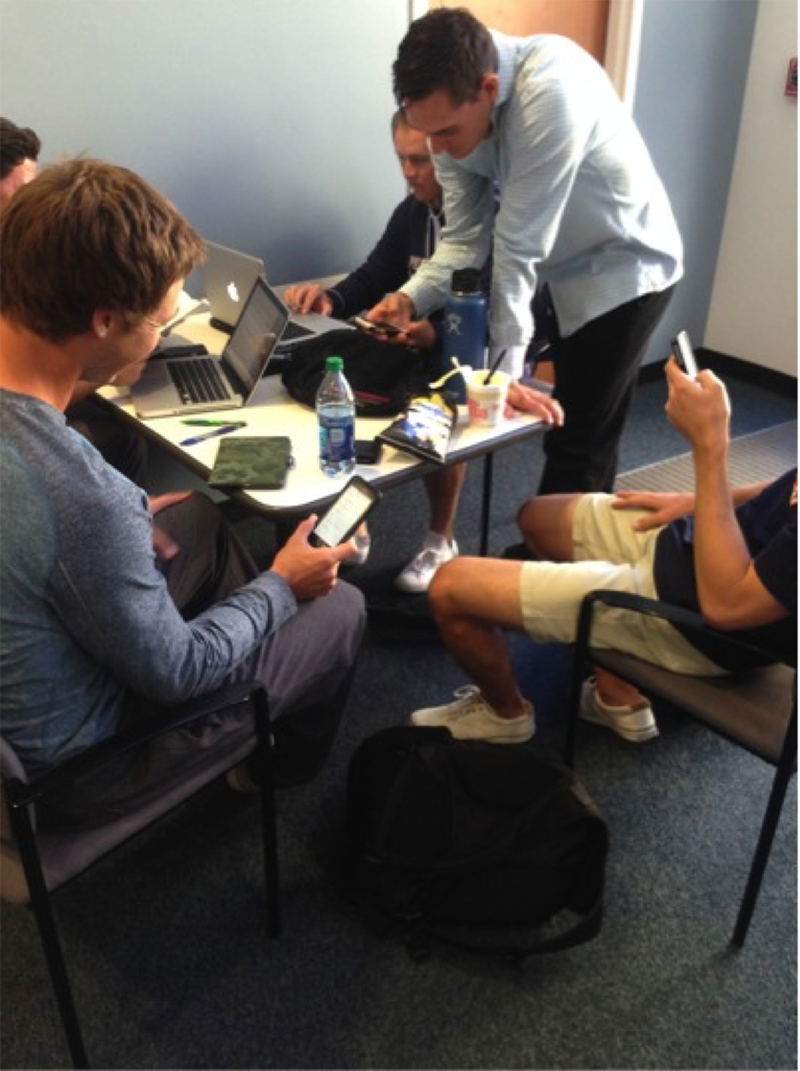
Some 4.5 million people are working in engineering in the United States, according to Data USA.
Engineering as a whole is a highly regarded and sought-after field. Of about 201,000 students who graduated with engineering degrees in 2019, approximately 77% were males, according to Data USA, a website that gives U.S. government data to help citizens understand specific issues in jobs, education and skills. This puts immense pressure on women to make their mark in engineering.
“I think in the future, hopefully, all my colleagues and everyone will be supportive,” sophomore engineering student Jenna Cavanagh said. “I know sometimes in like the bigger corporate world I’ve heard like how it can be harder for women in STEM or in engineering.”
Despite the competition between women and men in engineering, Pepperdine University offers a program that allows students to study the liberal arts and grow in their engineering knowledge.
The 3/2 engineering program at Pepperdine University.
The 3/2 program allows students to study for three years at Pepperdine and then transfer to the University of Southern California, or Washington University in St. Louis, to complete their degree in engineering in two more years. Students are also able to get a master’s degree if they study for one extra year through this program.
“They apply to Pepperdine, and once they’re accepted, they spend three years at Pepperdine and during their three years they finish all their GE courses,” said Gerard Fasel, a physics professor and coordinator of the 3/2 engineering program. “And then there is, depending on their discipline, whether it is mechanical, civil, industrial, chemical, biomedical, they take a core combination of courses, and after three years they then transfer over to either USC or WASHU.”
There are over 60 students involved in the 3/2 program, with about 10 to 15 of these students now at Washington University or USC.
This program allows students to receive a bachelor of arts from Pepperdine and then a bachelor of science from the school they transfer to.
“It really interested me how I could get two degrees from two different schools, “ Cavanagh said. “And I wanted the smaller school experience, but I also think it would be fun to have the experience at a bigger school, so I feel like this was a good way to get the best of both worlds.”
Pepperdine alumna Anna Oneto is a senior mechanical engineering major at Washington University in St. Louis. Oneto said Pepperdine gave her a unique experience because she was able to study so many different things.
“I think that one of the advantages of the 3/2 program, as opposed to just a strictly engineering program, is the strong background you get in liberal arts,” Oneto said. “I think that really sets me apart from a lot of the like regular engineering students that I have classes with.”
Fasel said there are nine female students in the engineering major at Pepperdine currently, but their involvement in the program is extremely high and they’ve done well. For instance, he’s had many students work at Northrop Grumman, which is an aerospace and technology company, after graduation. Out of the 11 Pepperdine graduates working at Northrop Grumman, nine of them are women.
“I have a lot of female 3/2 engineering students that are involved in research with me,” Fasel said.
Fasel also said that he has been able to help many students obtain internships. Out of the five students he has helped, four of them are women.
Although women studying engineering receive backlash, female students said Pepperdine gives them a safe place to improve their engineering skills.
“I think there is like, it’s kind of more well-known that women aren’t always treated the best, but I think it depends where you are,” Cavanagh said. “I think at Pepperdine it’s different because everyone is so nice here, that I’ve never really felt that way here honestly. I think it depends what environment you’re in.”
Despite the benefits of the 3/2 engineering program, there are drawbacks that come from studying for three years at Pepperdine.
Kaseba Chibwe is a Washington University second-year Ph.D. chemical engineering student and a Pepperdine alumna. Chibwe had a difficult transition when she transferred to Washington University.
“So like you finish Pepperdine you’ve been there for three years and you’ve never touched the engineering side of whatever you’re going to,” Chibwe said. “And it’s kind of like ‘OK, we really signed up for like a lot,’ to do like all of core engineering in two years is like a lot, and you can’t really get a full preview of it.”
Allison Nguyen, a junior biomedical engineering major at USC, said her time at Pepperdine was rewarding, but she saw the drawbacks of not being able to take engineering classes while at Pepperdine.
“You don’t necessarily take engineering classes at Pepperdine,” Nguyen said. “So that part I felt like I wasn’t able to get as good of an idea of what I was going to be doing, but I have no regrets at all.”
After Pepperdine, students continue studying
When students arrive at the point where they have to transfer out of Pepperdine to start engineering classes, they apply to USC as a regular transfer, and to Washington University as a transfer in the 3/2 program.
“You do have to apply as a transfer to USC specifically, so I applied basically along with all the other transfer students, as one would, whereas WASHU has a separate application process specifically for 3/2 transfers,” Nguyen said.
Nguyen said that Pepperdine prepared her to succeed at USC.
“Pepperdine prepares you really well, and I didn’t even know it until I came here,” Nguyen said.
Since Pepperdine is so small, female engineering students feel like they are outnumbered by male students. Once they transfer to a larger university, they see how many women are involved in engineering.
“I would say it’s very different than what I experienced at Pepperdine,” Nguyen said. “Just being a woman in engineering, that perspective, I feel like a majority of the classes I took at Pepperdine that were physics related, which are essentially what I was taking to build up to where I am now, there were not a lot of women in my classes.”
Although it seems like there are more female students in larger universities, Oneto said she still feels like there is a separation between genders in the engineering world.
“I’m looking forward to the day where you know women in engineering aren’t a minority,” Oneto said. “And where, you know, when you’re applying for a job, you’re not more likely to get a position, just because you are a woman, or you’re not a woman.”
Nguyen agreed that there is a separation between women and men in engineering. However, she sees that women are respected despite the gap.
“All of my engineering professors so far have been male, but I feel like it doesn’t play as big of a role,” Nguyen said. “I feel like they respect the students enough because like they know that we’re capable of doing it, but I guess sometimes it does feel discouraging when people kind of second-guess,” Nguyen said.
After students graduate, they find their place in the STEM field.
The STEM world is very competitive, especially for women, because they are outnumbered.
Kateryna Kononenko is a Pepperdine graduate who went on to study at Washington University. She is now a software engineer at Apple Inc. She said she sees more women than she would expect at her job, but overall the field is male-dominated.
“When I go into the cafeteria I feel like, I can definitely see like more men than women,” Kononenko said.
Kononenko said she found her place because of the mentorships she has participated in and other resources like the Society of Women Engineers, which is an organization that encourages female engineers to expand their knowledge in engineering and find a voice in the field.
“So I think there’s definitely like a lot of resources for people out there, like for women out there, which I think is great,” Kononenko said.
Chibwe said she has seen a gender gap throughout her engineering experience.
“I feel like big picture wise it is discouraging,” Chibwe said. “It’s hard to enter a space where you’re not the norm, like it doesn’t matter what we’re talking about, if you are not the norm in that space, you probably feel a little weird being there because it kind of just automatically feels like ‘Oh I don’t really quite fit in.’”
Despite the gap, Chibwe said that women are no longer uncommon.
“When I have been like interning or whatever there are several other women, not majority, but we’re not a rarity, a rare sight anymore,” Chibwe said.
Sofia Isenberg completed the reporting for this story in Jour 241 under the supervision of Dr. Christina Littlefield and Dr. Theresa de los Santos. Dr. Littlefield supervised the web version of the story.



